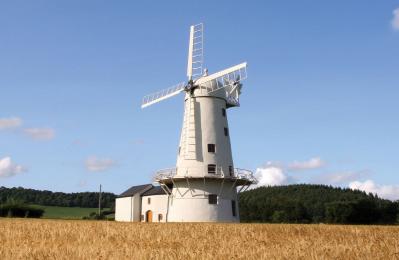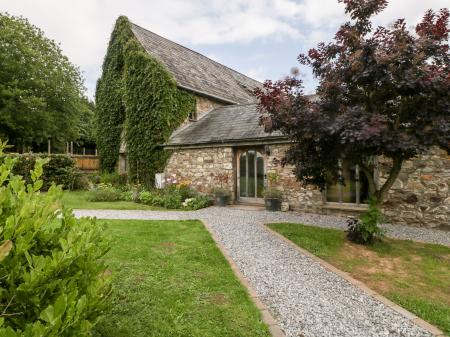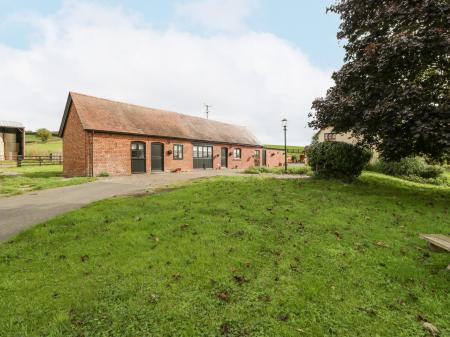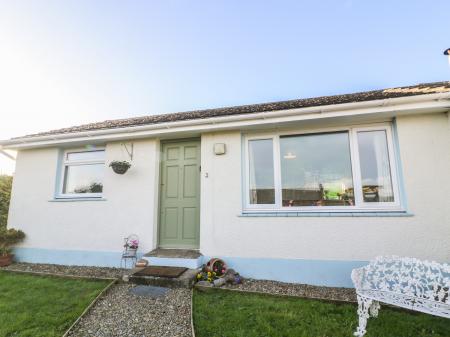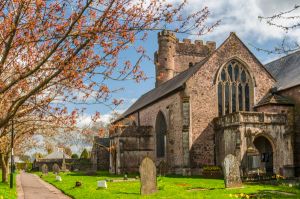
In 1405 Owain Glyndwr's rebellion swept through southern Wales. Usk was burned, and the church had to be rebuilt. Lare Perpendicular windows were inserted and a pair of porches built. The most striking of these is the west porch by which you enter the church. At the same time a pair of choir screens were added, one across the nave and the other across the north aisle.
During the 15th century, Usk Priory became a gathering place for pilgrims, drawn by the shrine of St Radagund. Radagund was a 6th century Frankish princess who had founded a monastery at Poitiers in France.
The pride of St Mary's is the beautifully carved 15th-century screen separating the nave from the chancel. This exquisite piece of craftsmanship is one of the finest screens in Wales, and though it has been restored and colourfully painted, the quality of the medieval craftsmanship shines through.
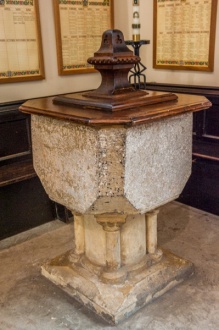
The chancel is an odd shape, the result of pulling down part of the original priory church. The rounded arches that support the tower high above are Norman, and have nicely sculpted capitals.
On the east face of the wooden screen is set a rectangular brass plaque commemorating Adam of Usk, a priest and chronicler, who died in 1420. The inscription is in ancient Welsh, and is one of the oldest in the country.
On the other side of the screen is the pulpit, which is Jacobean, and all that remains of an original triple-decker pulpit. Beneath it is a worn oak chest dating to 1520, used for storing important parish documents.
Over the chancel arch is a small window with fragments of medieval glass.
One of the most interesting historic features of St Mary's is not all that old; the massive pipe organ was built in 1861 for Llandaff Cathedral. In 1900 it was purchased from the cathedral for the sum of 300 pounds and brought here. It is considered the most complete cathedral organ in Britain.
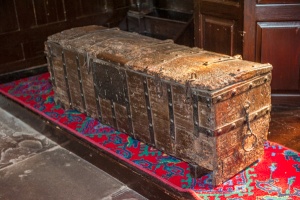
Immediately beside the west door, set against the wall, is an Elizabethan memorial to a soldier named Walter Jones. Many more wall tablets have been set up on the west wall of the nave.
Among these is one to Roger Edwards, a 16th-century wool merchant who founded a free school in Usk. To the north of the visitor entrance is the font; this is fairly simple, of Norman construction, set upon a later base. The font cover is made from pieces of the Jacobean pulpit that were removed when the pulpit was cut down.
Not all the interest is inside the church, however! Just outside the porch is the grave of St David Lewis, one of the '40 Martyrs of England and Wales' who was canonised as a Roman Catholic saint in 1970. In 1679 Lewis was executed for not renouncing his faith, near the current Catholic church on Porthycarne Street.
Also in the churchyard is the grave of Sir Matthew Digby Wyatt, a prominent Victorian architect who worked with Isambard Kingdom Brunel in designing Paddington Station in London, and also on the Rothschild Mausoleum in the Jewish Cemetery in West Ham.
Immediately outside the churchyard gates in Church Street is the abbey gatehouse, one of the last vestiges of the original medieval monastic buildings.
When you stand outside the churchyard and look back at the church, it is hard not to think that the tower looks more like it belongs on a castle than a church. It is unlike almost any church tower I have ever seen. If it had crenellations it could be mistaken for part of Usk Castle!
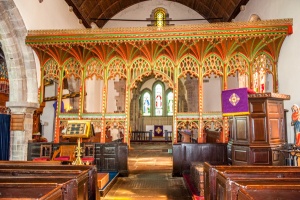
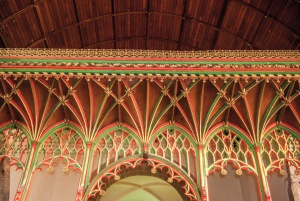
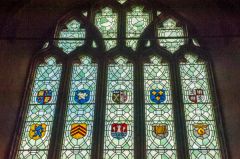
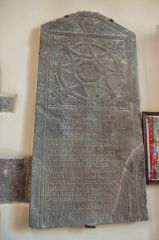
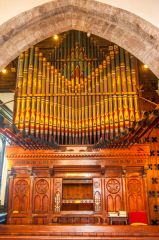
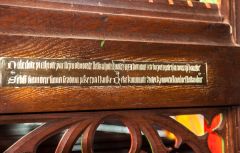
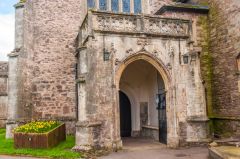
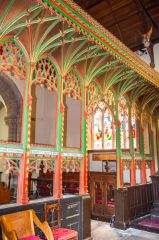
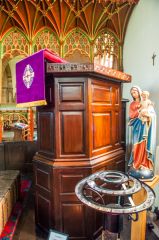
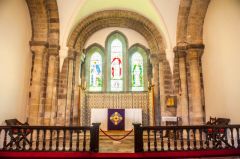
 We've 'tagged' this attraction information to help you find related historic attractions and learn more about major time periods mentioned.
We've 'tagged' this attraction information to help you find related historic attractions and learn more about major time periods mentioned.